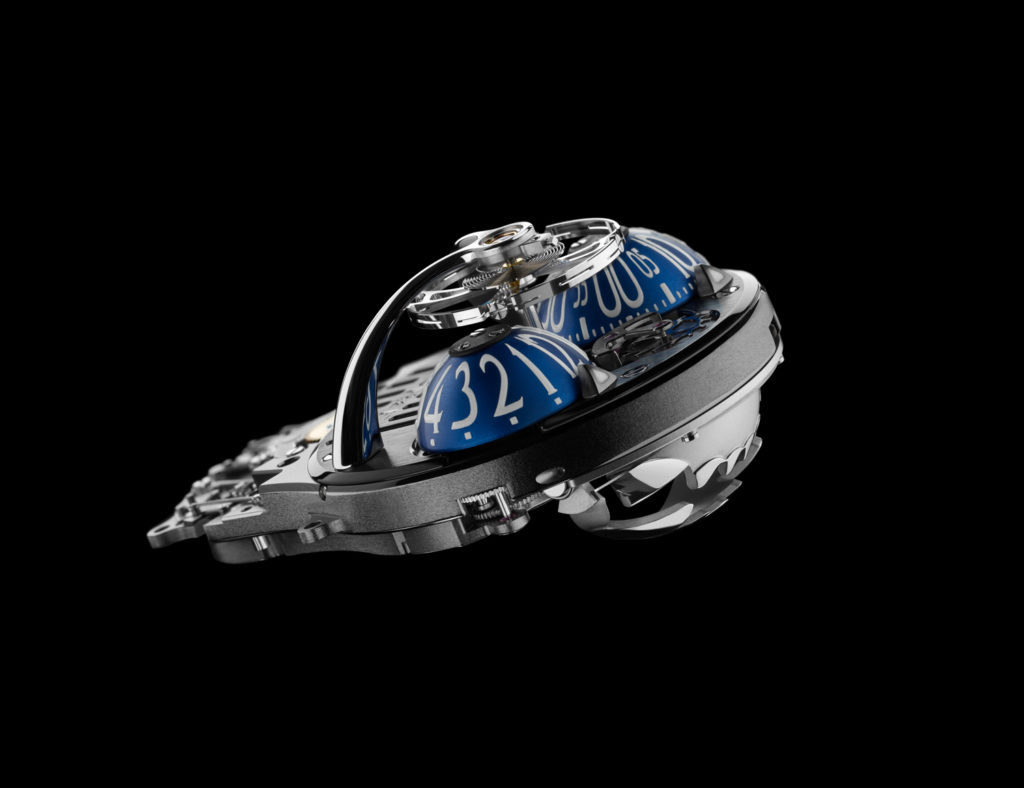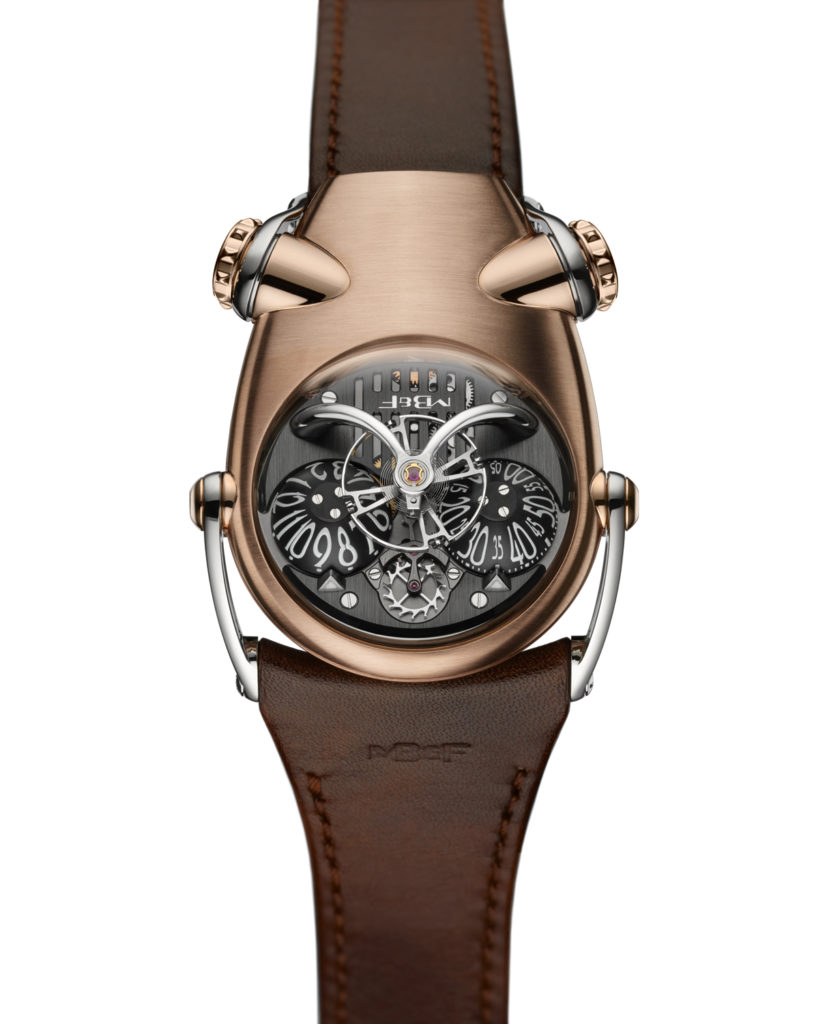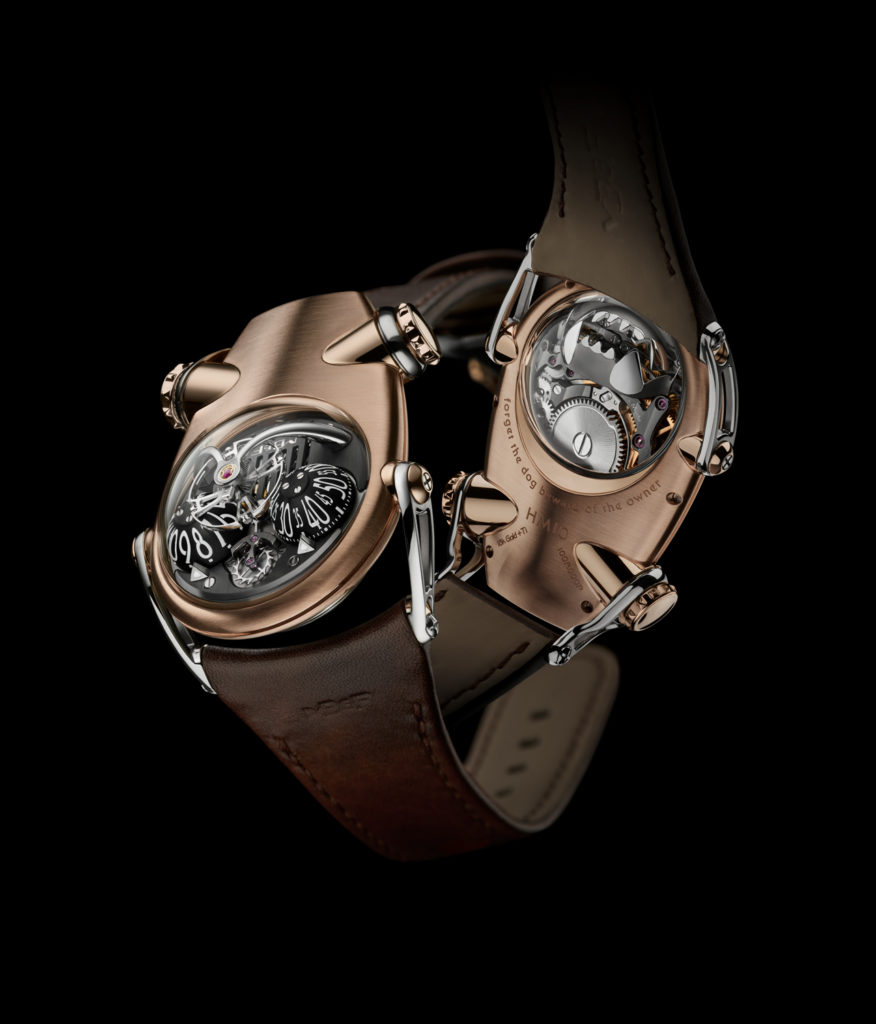Three optical “eyeballs” and three legs dominate the insect-like profile of TriPod, the latest MB&F desk clock co-creation with L’Epée. The rule of threes is further demonstrated by the clock’s three movement levels, an unusual three-day clock dial and by the fact that the clock is actually the result of a three-way collaboration between MB&F, L’Epée 1839 and designer Maximilian Maertens.

The new clock, which both makers debuted last week during Geneva Watch Days, arrives about a year after the debut of T-Rex, another cooperative venture that was the first of a trilogy of half animal/half robot creations that MB&F calls Robocreatures.
The TriPod performs its time-telling duties with more user interaction than is required by most clocks. To see the time, the user can either peer into a smallish dial placed atop the colorful insect-like clock body, or – preferably – look directly into one of the three glass orbs (TriPod’s ‘eyes’) that magnify the dial to make it more legible than it appears using the naked eye.
With either method, the user sees a dial composed two concentric, rotating disks and three sets of hour numerals placed around the perimeter of the dial, each numbered from 1 to 12. Making one full revolution in thirty-six hours means the dial indicates three sets of hours and minutes, each of which can be spied individually through one of the glass ‘eyes.’
Sculptural movement
TriPod is about ten inches high and is framed in plated brass. Three legs support a colorful body that houses a 182-component three-dimensional sculptural movement by L’Épée 1839. Like most L’Epée movements, when fully wound (by key) TriPod offers a full eight-day power reserve.
This ‘insect’ body is made from cast acrylic, which provides strong shock resistance and also means the clock is relatively light, weighing about six pounds. The body’s neon green, blue or red translucent shields allow a view of the clock movement, which is seen directly in the center of the body to mimic an insect torso.
TriPod launches in three limited editions of fifty pieces each in neon blue, neon green and neon red. Price: $24,500.
Specifications: MB&F/L’Epée TriPod
Display: Hours and minutes are indicated on two concentric dials visible from each of the three optical mineral glass spheres. Dials make one full rotation in 36 hours.
Body: Approximately 10 inches high by 12 in diameter. Weight: 2.8kg (about 6 pounds), 95 parts, plated brass, optical mineral glass, fluorescent acrylic shields.
Movement: L’Epée 1839 in-house designed and manufactured movement, balance frequency: 18,000 vph (2.5Hz), one barrel, power reserve eight days, 182 components, Incabloc shock protection system, manual-winding: double-ended key to set time and wind the movement.








































